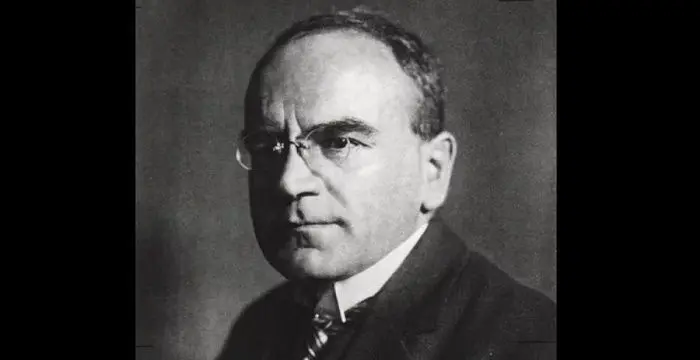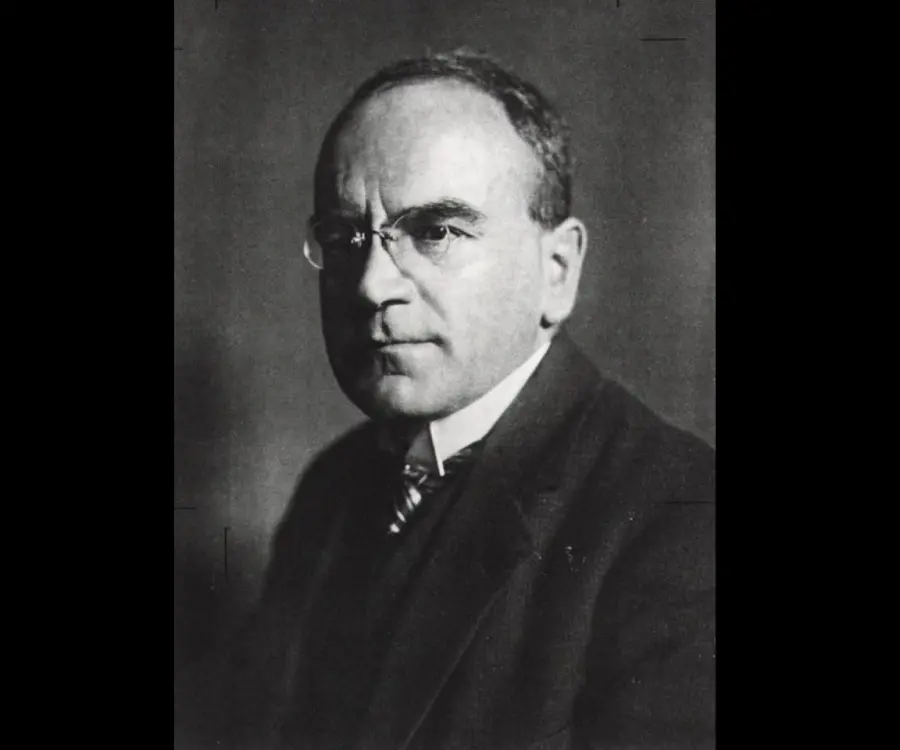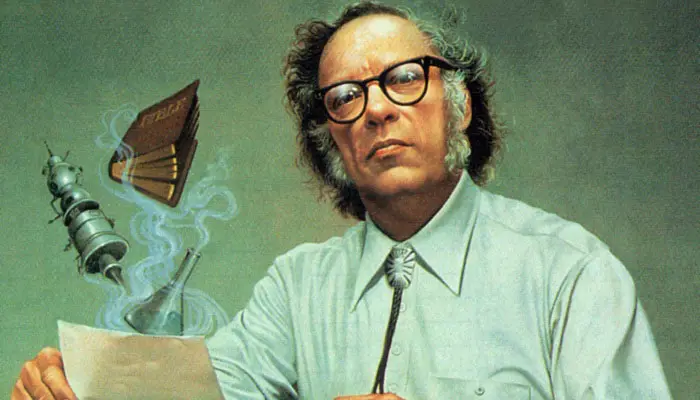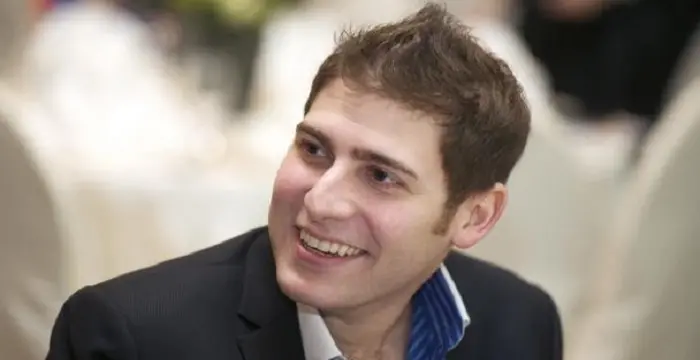
Heinrich Otto Wieland - Father of Biochemistry, Birthday and Family
Heinrich Otto Wieland's Personal Details
Heinrich Otto Wieland was an eminent German scientist who won the 1927 Nobel Prize in Chemistry for his investigations of the constitution of the bile acids
| Information | Detail |
|---|---|
| Birthday | June 4, 1877 |
| Died on | August 5, 1957 |
| Nationality | German |
| Famous | Scientists, Chemists, Biochemists, Organic Chemists, Father of Biochemistry |
| Known as | Виланд, Генрих Отто |
| Universities |
|
| Birth Place | Pforzheim |
| Gender | Male |
| Sun Sign | Gemini |
| Born in | Pforzheim |
| Famous as | Father of Biochemistry |
| Died at Age | 80 |
Heinrich Otto Wieland's photo
Who is Heinrich Otto Wieland?
Heinrich Otto Wieland was an eminent German scientist who won the 1927 Nobel Prize in Chemistry for his investigations of the constitution of the bile acids. In these days, when scientists tend to specialize from the very beginning his encyclopedic knowledge in all branches of chemistry fill us with wonder. He was probably one of the last academics who had the entire subject on the fingertips. Known as the father of biochemistry he made a number of astounding discoveries covering a wide range of subjects. Among them, Wieland became best known for his work on bile acid. It not only brought him Nobel Prize but also played a key role in explaining metabolism as well as structure of steroids, which in turn helped to develop number of drugs, including the contraceptive pills. However, he shied away from limelight all through his life and consequently not many people remember his name today. In fact, he was first to synthesize arsenical diphenylaminechlorarsine. But, because his discovery did not get much notice, it was named Adamsite after Roger Adam, who worked on it much later. Heinrich Otto Wieland was also a very good human being and risked his own life to save his Jewish students from the Nazis.
// Famous Chemists
Henry Cavendish
Henry Cavendish was a theoretical chemist and physicist, renowned for discovery of hydrogen and calculation of the mass of earth. To know more about his childhood, profile, timeline and career read on
Walter Kohn
Nobel Laureate Walter Kohn was an Austrian-born American theoretical chemist and physicist. Check out this biography to know about his childhood, life, achievements, works & timeline.
Jabir Ibn Hayyan
Jabir Ibn Hayyan was a medieval era polymath. Check out this biography to know about his life, works and achievements.
Childhood & Early Life
Heinrich Otto Wieland was born on 4 June 1877, in Pforzheim, an ancient town in the federal state of Baden-Württemberg, in the southwest of Germany. At the time of his birth, the town was known for its jewelry and watch-making industry.
Heinrich’s father, Theodor Wieland, also owned a gold and silver refinery in the town. In addition, he was a pharmacist with a doctorate in chemistry. His mother’s name was Elise Blum Wieland. Nothing is known about his yearly years except that he had his schooling at Technical High School in Stuttgart.
Later he studied at the Universities of Munich, Berlin and Stuttgart. Finally he returned to Munich to work for his doctoral thesis at Baeyer Laboratory under Johannes Thiele. He received the PhD degree in 1901 and completed habilitation in 1904.
Career
In 1904, Wieland started his academic career at the Ludwig Maximilian University of Munich. In 1907, he was appointed as a consultant at Boehringer Ingelheim GmbH, a pharmaceutical company, located at Ingelheim am Rhein, but continued teaching as well as research work at the University.
In 1911, Wieland found that it was possible to detect and distinguish different forms of nitrogen in organic compounds. This discovery is considered to be one of the important milestones in the development of structural organic chemistry.
Subsequently, he started working on bile acids, produced by our lever and published his first paper on that topic in 1912. He continued on working on that topic for two more decades and the final paper was published in 1932.
In 1913, Wieland became an Associate Professor in Organic Chemistry at Technical University of Munich. Next in 1915, he became an advisor at the Boehringer Ingelheim GmbH and set up the first scientific department of the company.
Also in 1915, he was able to synthesize an organic compound called arsenical diphenylaminechlorarsine, to be used as riot control agent. Unfortunately, his discovery did not get much notice. It was later named Adamsite after Roger Adam, who developed it independently in 1918 at the University of Illinois, USA.
In 1917, he was promoted to the post of full professor at the Technical University of Munich. He now started operating from the Technical College, located close to the University. He also became the Director of the Organic Division of the Sate Laboratory.
Soon after joining his new post, Wieland was sent to the Kaiser Wilhelm Institute (KWI) for Physical Chemistry and Elektrochemistry in Dahlem as part of war service. At that time, scientists at KWI were busy In war research under Fritz Haber, the Father of Chemical Warfare.
Here, he was mainly involved in finding a synthetic route to sulfur mustard, commonly known as mustard gas. It is a cytotoxic agent that had the ability to form large blisters on the exposed skin and in the lungs. However, the war ended before he could succeed in this endeavor.
In 1918, Wieland went back to his teaching and research career at Technical University of Munich. Soon, he received a call from the Albert Ludwig University of Freiburg, a public research university located in Freiburg im Breisgau, Baden-Württemberg.
Wieland joined the University of Freiburg in 1921 as a successor to Ludwig Gattermann. Here, he continued his research on bile acids and at the same time started working on various other topics such as toad poison, synthetic alkaloids such as morphine and strychnine.
In 1925, he joined Ludwig Maximilian University (LMU) of Munich on the request of Richard Willstätter, who had retired from his post as a protest against anti Semitic environment in Germany. Wieland was now appointed to his Chair. He remained in that position till his retirement in 1950.
For twenty five years, Wieland was the head of the Chemical Laboratory at LMU, popularly referred as the University of Munich. It was during this period, he concluded his research on bile acid, which brought him the Nobel Prize in Chemistry in 1927, much before he actually concluded his study on the subject.
Heinrich von Wieland was a brilliant researcher who had four hundred publications covering a wide range of topics in organic chemistry and biochemistry to his credit. At the same time, he was also an excellent human being and a loving teacher.
When Nuremberg Laws were proclaimed in 1935, Wieland helped many of his Jewish students to flee to the USA. He made them sit for the exams at his home and then marked their paper passed. He also gave them recommendation paper, some money out of his own pocket and told them to disappear.
Those who could not escape were given shelter in his Laboratory as ‘Gäste des Geheimrats’ (guests of the privy councillor). He insisted that to carry on his research it was imperative that he had these students with him. As he had by then become an acclaimed scientist and his opinion was not overruled.
However, from 1938 onwards, when situation started becoming more and more alarming, he hid his Jewish students in cellars and storage rooms. As his anti Nazi stance was well-known, his laboratory was under surveillance, yet he did not budge from his stance.
In spite of such situation, Wieland continued his research work. In 1941, he isolated the toxin alpha-amanitin. It is the principal active agent of Amanita phalloides, said to be one of the world's most poisonous mushrooms.
Major Works
Heinrich von Wieland is best known for his work on the molecular structure of bile acid. Early in 1911, he isolated three acids; namely the cholic acid, deoxycholic acid, and lithocholic acid. Later he showed that they were steroids of similar structure and were related to cholesterol.
Oxidation processes in living cells also interested him a great deal. After extensive research he found that the process involves dehydrogenation, removing hydrogen atoms from the cell, rather than adding oxygen.
His work on organic nitrogen compounds such as nitrogen oxides also merits especial mention. He was first to produce stable organic nitrogen radicals like diphenyl nitrogen and its N-oxide. His work in this respect contributed significantly in the development of organic radical chemistry.
His works also helped to clarify the structure of morphine and strychnine. He also contributed to the constitution and synthesis of the lobelia alkaloid and the research into the curare alkaloid.
Awards & Achievements
Wieland received the 1927 Nobel Prize in Chemistry "for his investigations of the constitution of the bile acids and related substances".
In 1955, he received Otto Hahn Prize for Chemistry and Physics along with Austrian physicist Lise Meitner. The prize was awarded jointly by the German Chemical Society, the German Physical Society and the city of Frankfurt am Main.
Personal Life & Legacy
In 1908, Wieland married Josephine Bartmann Wieland. The couple had three sons and one daughter. His eldest son, Wolfgang Wieland, was a doctor of pharmaceutical chemistry, his second son Theodor Wieland was a professor of chemistry; his third son Otto Wieland was a professor of medicine. His daughter, Eva Wieland Lynen, was married to Nobel Prize winning German biochemist Feodor Lynen.
Wieland died on 5 August 1957, in Starnberg from natural causes. He was few months short of eighty at the time of his death.
In 1963, Heinrich Wieland Prize was established in his honor by Mergarine Institute in support of researches in the field of lipid. However, from 2000, Boehringer Ingelheim began to sponsor the prize and now it covers researches on a wider range of subjects.
Trivia
Wieland’s 1927 Nobel Medal was auctioned in April 2015. It received just a single bid, raising a princely sum of $395,000. Incidentally, it is the only Nobel Medal in Chemistry to be auctioned till now.
// Famous Biochemists
Robert Huber
Robert Huber is a German biochemist and Nobel Laureate. Check out this biography to know about his childhood, life, achievements, works & timeline.
Charles Best
Charles Best was a great scientist and a renowned physiologist who is remembered for being the co-discoverer of insulin. Read this biography to learn about his profile, childhood, life and timeline.
Isaac Asimov
Isaac Asimov was an American professor of biochemistry and a renowned author of science fiction and popular science books. Read this biography to know more about his life.
Heinrich Otto Wieland's awards
| Year | Name | Award |
|---|---|---|
Other | ||
| 0 | 1927 - Nobel Prize in Chemistry | |
| 0 | 1955 - Otto-Hahn Prize for Chemistry and Physics | |
Heinrich Otto Wieland biography timelines
- // 4th Jun 1877Heinrich Otto Wieland was born on 4 June 1877, in Pforzheim, an ancient town in the federal state of Baden-Württemberg, in the southwest of Germany. At the time of his birth, the town was known for its jewelry and watch-making industry.
- // 1901 To 1904Later he studied at the Universities of Munich, Berlin and Stuttgart. Finally he returned to Munich to work for his doctoral thesis at Baeyer Laboratory under Johannes Thiele. He received the PhD degree in 1901 and completed habilitation in 1904.
- // 1904 To 1907In 1904, Wieland started his academic career at the Ludwig Maximilian University of Munich. In 1907, he was appointed as a consultant at Boehringer Ingelheim GmbH, a pharmaceutical company, located at Ingelheim am Rhein, but continued teaching as well as research work at the University.
- // 1908In 1908, Wieland married Josephine Bartmann Wieland. The couple had three sons and one daughter. His eldest son, Wolfgang Wieland, was a doctor of pharmaceutical chemistry, his second son Theodor Wieland was a professor of chemistry; his third son Otto Wieland was a professor of medicine. His daughter, Eva Wieland Lynen, was married to Nobel Prize winning German biochemist Feodor Lynen.
- // 1911In 1911, Wieland found that it was possible to detect and distinguish different forms of nitrogen in organic compounds. This discovery is considered to be one of the important milestones in the development of structural organic chemistry.
- // 1911Heinrich von Wieland is best known for his work on the molecular structure of bile acid. Early in 1911, he isolated three acids; namely the cholic acid, deoxycholic acid, and lithocholic acid. Later he showed that they were steroids of similar structure and were related to cholesterol.
- // 1912 To 1932Subsequently, he started working on bile acids, produced by our lever and published his first paper on that topic in 1912. He continued on working on that topic for two more decades and the final paper was published in 1932.
- // 1913 To 1915In 1913, Wieland became an Associate Professor in Organic Chemistry at Technical University of Munich. Next in 1915, he became an advisor at the Boehringer Ingelheim GmbH and set up the first scientific department of the company.
- // 1915 To 1918Also in 1915, he was able to synthesize an organic compound called arsenical diphenylaminechlorarsine, to be used as riot control agent. Unfortunately, his discovery did not get much notice. It was later named Adamsite after Roger Adam, who developed it independently in 1918 at the University of Illinois, USA.
- // 1917In 1917, he was promoted to the post of full professor at the Technical University of Munich. He now started operating from the Technical College, located close to the University. He also became the Director of the Organic Division of the Sate Laboratory.
- // 1918In 1918, Wieland went back to his teaching and research career at Technical University of Munich. Soon, he received a call from the Albert Ludwig University of Freiburg, a public research university located in Freiburg im Breisgau, Baden-Württemberg.
- // 1921Wieland joined the University of Freiburg in 1921 as a successor to Ludwig Gattermann. Here, he continued his research on bile acids and at the same time started working on various other topics such as toad poison, synthetic alkaloids such as morphine and strychnine.
- // 1925 To 1950In 1925, he joined Ludwig Maximilian University (LMU) of Munich on the request of Richard Willstätter, who had retired from his post as a protest against anti Semitic environment in Germany. Wieland was now appointed to his Chair. He remained in that position till his retirement in 1950.
- // 1927For twenty five years, Wieland was the head of the Chemical Laboratory at LMU, popularly referred as the University of Munich. It was during this period, he concluded his research on bile acid, which brought him the Nobel Prize in Chemistry in 1927, much before he actually concluded his study on the subject.
- // 1927Wieland received the 1927 Nobel Prize in Chemistry "for his investigations of the constitution of the bile acids and related substances".
- // 1927 To Apr 2015Wieland’s 1927 Nobel Medal was auctioned in April 2015. It received just a single bid, raising a princely sum of $395,000. Incidentally, it is the only Nobel Medal in Chemistry to be auctioned till now.
- // 1935When Nuremberg Laws were proclaimed in 1935, Wieland helped many of his Jewish students to flee to the USA. He made them sit for the exams at his home and then marked their paper passed. He also gave them recommendation paper, some money out of his own pocket and told them to disappear.
- // 1938However, from 1938 onwards, when situation started becoming more and more alarming, he hid his Jewish students in cellars and storage rooms. As his anti Nazi stance was well-known, his laboratory was under surveillance, yet he did not budge from his stance.
- // 1941In spite of such situation, Wieland continued his research work. In 1941, he isolated the toxin alpha-amanitin. It is the principal active agent of Amanita phalloides, said to be one of the world's most poisonous mushrooms.
- // 1955In 1955, he received Otto Hahn Prize for Chemistry and Physics along with Austrian physicist Lise Meitner. The prize was awarded jointly by the German Chemical Society, the German Physical Society and the city of Frankfurt am Main.
- // 5th Aug 1957Wieland died on 5 August 1957, in Starnberg from natural causes. He was few months short of eighty at the time of his death.
// Famous Scientists
Juliane Koepcke
Juliane Koepcke is a German-Peruvian biologist, who was the lone survivor among the 92 passengers and crew of the ill-fated LANSA Flight 508 that crashed in the Peruvian rainforest on 24 December 1971. Know more about her life in this biography.
Henry Cavendish
Henry Cavendish was a theoretical chemist and physicist, renowned for discovery of hydrogen and calculation of the mass of earth. To know more about his childhood, profile, timeline and career read on
Konstantin Tsiolkovsky
Konstantin Tsiolkovsky was a Russian rocket scientist and a pioneer of astronautics. This biography provides detailed information about his childhood, family, personal life, career, achievements, etc.
Gabe Newell
Gabe Newell is an American computer programmer and businessman, best known as the co-founder of ‘Valve Corporation.’ This biography provides detailed information about his childhood, family, personal life, career, etc.
Grigori Perelman
Grigori Perelman is a Russian mathematician who is best known for his contributions to Riemannian geometry and geometric topology. Check out this biography to know about his childhood, family life, achievements and fun facts about him.
Eduardo Saverin
Eduardo Luiz Saverin is a Brazilian internet entrepreneur and investor. This biography profiles his childhood, life, career, achievements, and timeline
Heinrich Otto Wieland's FAQ
What is Heinrich Otto Wieland birthday?
Heinrich Otto Wieland was born at 1877-06-04
When was Heinrich Otto Wieland died?
Heinrich Otto Wieland was died at 1957-08-05
Where was Heinrich Otto Wieland died?
Heinrich Otto Wieland was died in Starnberg
Which age was Heinrich Otto Wieland died?
Heinrich Otto Wieland was died at age 80
Where is Heinrich Otto Wieland's birth place?
Heinrich Otto Wieland was born in Pforzheim
What is Heinrich Otto Wieland nationalities?
Heinrich Otto Wieland's nationalities is German
What was Heinrich Otto Wieland universities?
Heinrich Otto Wieland studied at Ludwig Maximilian University of Munich
What is Heinrich Otto Wieland's sun sign?
Heinrich Otto Wieland is Gemini
How famous is Heinrich Otto Wieland?
Heinrich Otto Wieland is famouse as Father of Biochemistry











